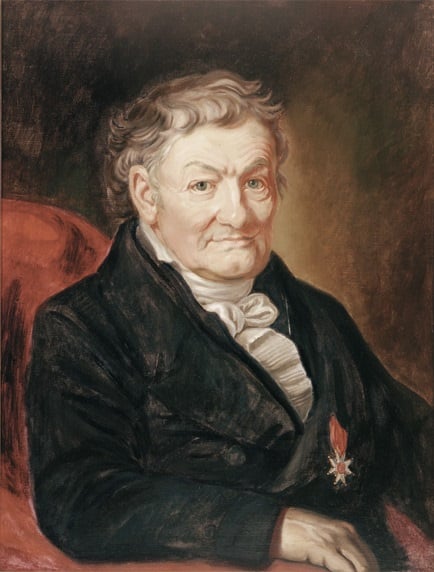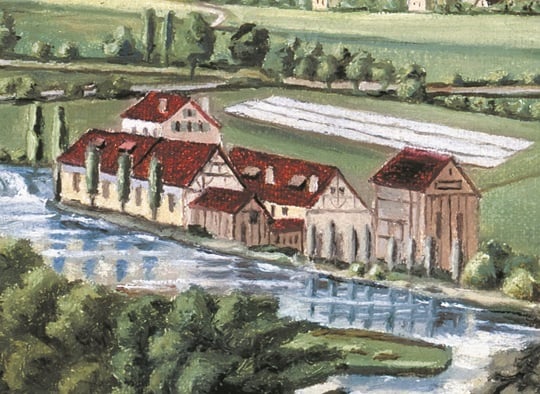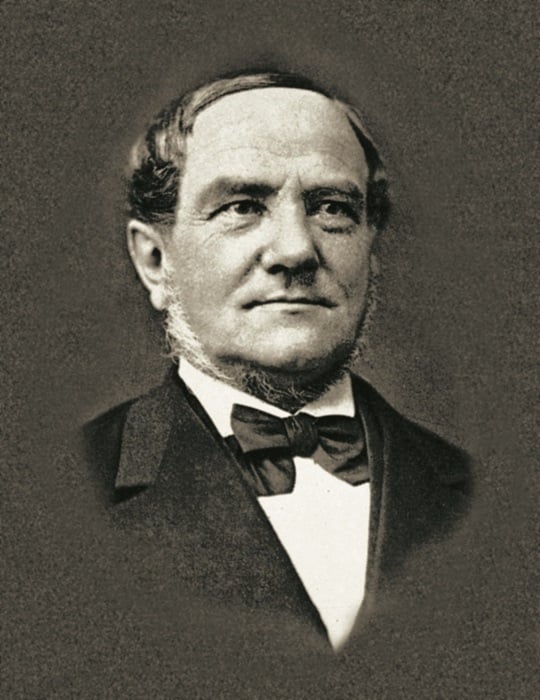When Paul Hartmann's family business was founded in 1818 in the Swabian town of Heidenheim, there was no way to know that it would one day become a leading international provider of medical and hygiene products: today's global group was once purely a textile company. Here is part one of the company's history – from 1800 to 1873.

The Hartmann family once called Stuttgart home. Yet at some point in the early 19th century, father Ludwig moved to Heidenheim with his wife and their 15 children. Imported cotton was driving the expansion of the textile industry in this town on the river Brenz, 33 kilometres north of Ulm. Councillor of Commerce Ludwig Hartmann, who in later years would become a knight of the Order of the Württemberg Crown and as such entitled to an aristocratic "von" preceding his family name, wanted a piece of the action there. On 1st March 1818, he founded a textile company that picked up the business of the former Meebold spinning mill.
Under Hartmann, the new operation spun cotton and bleached fabrics that ultimately went into producing caps, stockings and handkerchiefs. Because the machines required for cotton spinning were water-driven, the company's site was located on the river Brenz that flows through Heidenheim. The Brenz was also an important communication route: when Hartmann wished to speak with neighbouring industrialists such as Friedrich Voith, he came to them by boat. The local entrepreneurs, above all Hartmann, were of course also very interested in road construction and linking up with metropolitan Stuttgart.
Son Paul reinvents his paternal inheritance
Infrastructure gradually took shape, and developments in Heidenheim contributed to the industrialisation of Württemberg. One of Ludwig's sons was Paul, who completed his training and, aged 22, joined the operation in 1834. Nine years later, in 1843, Paul and his brothers Carl and Eduard took over the company. Paul was responsible for the Heidenheim cotton mill, Carl for the bleaching plant and Eduard for the Herbrechtigen spinning mill. Paul Hartmann then took his business in another direction, by buying the "Scheckenbleiche" bleaching plant in 1867, which then lay the foundation for today's PAUL HARTMANN AG.
At that time, the business was called "Paul Hartmann Heidenheim Bleaching, Dyeing and Textile Finishing" and Paul Snr. went into partnership with his sons, Paul Jnr. and Albert Hartmann. Although textile production continued, the three were destined for more. Hartmann Snr., with his fascination for matters related to the healing of wounds, hygiene and medical progress, would soon become a pioneer in the medical dressings industry. As head of the company, he travelled extensively to medical trade fairs and congresses, where he gathered information and made numerous contacts. He knew that combined effort and strong partnerships lead to success, which is, incidentally, a distinguishable feature in the company today.

Improvements in wound treatment

The Franco-Prussian war of 1870/71 marked a watershed moment in the company's development. One of Paul's sons, Arthur Hartmann, had become a physician and participated in the war as a member of the Württemberg army medical corps. Upon returning home after the war's end, he complained about a shortage of suitable dressing material in military hospitals. This alone bothered his father, but more than that, solutions finally had to be found for the everyday routine in civilian hospitals as well – for example, wound care after surgery. Paul Hartmann consulted with Victor von Bruns, a surgeon from Tübingen, who had made a ground-breaking invention: a degreased and bleached cotton wool that provided a dressing material to absorb blood and pus.
Paul Hartmann put Bruns’s absorbent, but also hygienic, innovation into practice in the early 1870s. At once, wound care had been improved. Paul Hartmann achieved the first decisive milestone on the way to becoming a medical products manufacturer when his factory began quantity production of the novel dressing in 1873.
2018 marks HARTMANN’s 200-year anniversary.
To commemorate this milestone, we have put together this series of articles. In it we show how our employees and partners contribute to advancing healthcare, as well as discussing trends and issues that affect the healthcare systems we serve.
